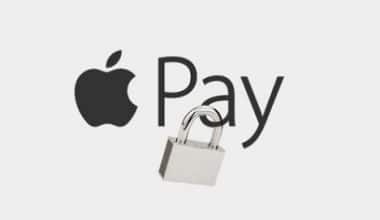Buying things online has grown popular in today’s digital age. More people are relying on these stores for their shopping needs due to their convenience – when you buy things from an online store and check up on your order status frequently enough, there’s always a chance that some technical terminologies will go over your head because they’re not explained well or at all! “Waiting for fulfillment” is one such word. Some customers believe this indicates their package has vanished, however, this is not the case.
What’s the issue with the “awaiting fulfillment” order status? It indicates that your package is on its way, but not necessarily gone. Understanding this will assist you in remaining patient!
What is Awaiting Fulfillment?
One of the order fulfillment processes is Awaiting Fulfillment. Your order is not missing at this point in the fulfillment process. The order fulfillment procedure has not yet begun, despite the fact that your order has been received and accepted for fulfillment.
Your order would be processed at this point before being dispatched to its intended recipient. Your order would then be put into a box for shipment, just like every other item at the factory.
The quantity of the order and the efficiency of the shipping firm determine the completion of awaiting fulfillment. Once this stage is complete, you will receive a confirmation email and the status will change to “awaiting shipment.”
Awaiting Fulfillment: Understanding Order Status
Your order will go through several further phases before it is delivered to you, including the Awaiting Fulfillment Status. You can better understand how a logistic warehouse operates if you are aware of every step of the fulfillment process.
As an e-commerce company, you must maximize efficiency at all levels. Order cycle time must be evaluated, nevertheless, to maximize the effectiveness of the order fulfillment process.
Order cycle time is defined as the time it takes from the moment an order is placed to the time it is shipped. Because of rising client expectations for on-time delivery, you should strive for a faster order cycle to provide a more seamless experience.
Continue reading to learn about some of the important order statuses that your consumers are likely to encounter during the order journey.
#1. Submitted for Fulfillment
Orders are submitted for fulfillment after being paid for and verified by the online shop. Such an update confirms that the order data (invoice) have been transferred from the e-commerce company to the logistics partner.
The goal is frequently to proceed quickly to the fulfillment process, therefore it may not always appear on monitoring status notifications.
If this change is reflected when your customers click on the tracking number link, it means that the payment has been received and verified, and the order is now on its way to fulfillment.
#2. Pending Fulfillment
This is the point at which the e-commerce business’s logistics partner company accepts the fulfillment request and begins the process of choosing and packaging the products into the appropriate shipping boxes. The fulfillment process is still ongoing, though.
Several businesses use the terms “pending fulfillment” and “awaiting fulfillment” interchangeably.
You may also note that the tracking information for the order shows “in the hold” at times. It signifies that some information is lacking or required for the order to be fulfilled. This could be due to missing customs information, inadequate label data, ambiguous packaging preferences, and so on.
After the missing information or details are provided, the order procedure will be restarted.
#3. Partially Shipped
Only a portion of the order has been dispatched, according to the status “partially shipped.” This typically occurs when a product is out of stock. As a result, the package is divided. In this instance, the remaining order is mostly completed later.
#4. Shipped
That is a critical update in the order journey because it informs you that the order has been safely sent by a courier provider. If an online store promises two-day delivery, it is usually determined from the ship date, which is the date the order is dispatched.
Typically, such an update is given to the consumer via a confirmation email or text message, along with package tracking information. From now on, expect updates like “in transit,” “in the local hub,” “out for delivery,” and so on.
In general, all major shipping firms, such as FedEx, USPS, DHL, UPS, and others, provide estimated delivery dates to help recipients arrange their deliveries.
#5. Delivered
“Order delivered” is the most rewarding status update for your customers.
It is only reflected when the package has been delivered to the receiver or is waiting to be picked up outside their home or garage.
The order may occasionally be incorrectly labeled as delivered by delivery services. In such circumstances, the customer should contact the online store and report the problem.
Regardless of how cautious transporters are, delivery exceptions may occur. This means that a product is delayed due to unanticipated circumstances such as customs hold-ups, federal holidays, damaged labels, weather conditions, and so on. It is better if an e-commerce company prepares for this and maintains open lines of communication with customers.
What Stage Follows Awaiting Fulfillment?
Pending fulfillment is the step that follows “awaiting fulfillment.” The fulfillment center has confirmed the order and is awaiting the product to begin the fulfillment process when your order status indicates “awaiting fulfillment.” They have already received the merchandise, but the process has not yet commenced. Because merchants ship their items to fulfillment centers and warehouses on a regular basis, it usually does not take long for this status to change to ‘waiting fulfillment.’ The fulfillment process can start as soon as possible.
Following that is the ‘pending fulfillment’ stage. Typically, this signifies one of two things. Either the product is currently going through the fulfillment process, which means it is being packaged and properly labeled, or the fulfillment process is complete and waiting to be picked up by the delivery provider, at which point the status switches to ‘shipped’.
How Long Does Awaiting Fulfillment Take?
Awaiting fulfillment is quick. If you see this in your order status, it signifies that the payment has been confirmed and that the item is either being transported to the fulfillment center or that it is already there and the fulfillment process is about to begin.
Each of these things takes very little time. Particularly if you order from a huge online marketplace like Amazon, the item is frequently delivered to your home in two to three business days. This indicates that their fulfillment process is relatively quick, and you will not have to wait too long.
What Distinguishes Awaiting Fulfillment From Pending Fulfillment and Awaiting Shipment?
Before it reaches your customer, an order passes through several phases. While we’ve addressed some of the essential statuses to expect along the way, certain changes may appear similar and confuse your clients.
Continue reading to have a better understanding of these.
Pending fulfillment Vs. Awaiting fulfillment
The terms “awaiting fulfillment” and “pending fulfillment” essentially signify the same thing: the order is being processed, chosen, and packed into the intended package. This status also indicates that the order is not complete and is not yet ready to ship.
Several e-commerce businesses use these terms interchangeably to refer to the same thing.
Awaiting shipment Vs Awaiting fulfillment
“Awaiting Shipping” indicates that the order is ready to ship but has not yet been picked up or dropped off at the carrier.
On the other hand, “Awaiting fulfillment” indicates that the order is being processed but is not yet ready to ship. The order’s products are being assembled in an appropriate package for shipment. After “awaiting fulfillment,” “Awaiting shipping” is the next logical stage in the order path.
Reasons Why the Order Might Be Awaiting Fulfillment
“Awaiting fulfillment” is a stage in the order journey that normally occurs relatively quickly due to today’s quick logistical solutions. If a consumer isn’t closely following the order updates, this stage can be easily missed.
However, if a product is out of stock or there are gaps in the order, this order status will be displayed for a longer period of time.
It should be a rapidly changing order status, but if it hasn’t changed in a while, the following are some possible causes for the order to be stuck at this stage.
#1. Inability To Find the Items
The inability to locate items per order can create a delay in fulfillment. It usually occurs as a result of poor warehouse management, confusing communication, and so on. The order status may be stalled on “awaiting fulfillment” due to one of these reasons.
It is critical to arrange inventory locations to avoid such unneeded delays. Inventory positioning refers to both the physical location of your inventory in storage and its overall position in the supply chain.
#2. Improper Inventory Management
Many factors must be considered when designing inventory positioning, from ensuring that heavy or large SKUs are housed on lower racks to ensuring that high-volume products are easily accessible.
Brands experiencing growth may encounter incorrect inventory management, resulting in “out-of-stock,” “back order,” and abused storage issues. All of this can lead to orders “awaiting fulfillment” for longer than anticipated.
If your company is expanding, you must put in place processes that can handle the increased volume of work.
Ways To Enhance the Fulfillment Processes
Unlike in a physical store, the first moment of physical interaction for e-commerce customers is when they receive their order package.
While many online businesses focus on the pre-purchase experience, the post-order placement experience is essential to repeat transactions. According to a survey, 72.7% of respondents stated they are less likely to shop from an online retailer following a bad delivery experience.
In a competitive environment where Amazon has raised customer expectations to rapid same-day, next-day, and two-day delivery standards, if your brand delivers anything less than a delight, it’s passing up possibilities.
As a developing D2C company, you must always push the edge and implement procedures that maximize productivity.
Here are some strategies to optimize your order fulfillment process to improve client satisfaction.
#1. Streamline your returns procedure.
While many people consider returns to be a cost center, they may also be an opportunity to get feedback and provide an exceptional client experience.
There are two types of returns: controllable and uncontrollable.
Controllable returns are caused by a lack of clear communication, packaging issues, shipment delays, etc. And, as the name implies, it may be avoided if handled appropriately.
Uncontrollable returns, on the other hand, are beyond a brand’s control and are determined by the customers’ intentions. For example, many enterprises in the apparel industry endure “serial returns.” It is the habit of purchasing multiple sizes of the same or different items with the intention of returning the ones they don’t like.
If you are a brand trying to increase the efficiency of your controllable returns, you can do the following:
- Involve your personnel involved in returns management to make any necessary changes (say the packing process needs improvement etc.)
- Consider customer comments on returned merchandise.
- A clear return policy must be communicated on your website.
- Streamline your inventory management.
- To eliminate gaps, communicate product specifics and use graphics that are comparable to the actual product.
#2. Automate Order Processing
If you want to grow your business but aren’t sure how to handle the increased effort, consider automated order processing. Simply put, it entails employing technology to handle orders more quickly and without the need for manual interaction.
Utilizing technology reduces human error, improves operational efficiencies, and speeds up the fulfillment and shipping processes.
Order processing automation is no longer limited to huge e-commerce companies. Smaller businesses are beginning to notice the productivity benefits of working with a third-party logistics company such as ShipBob, which provides automated order-handling processes.
#3. Forecast Demand
If you want to deliver more of a smooth experience to your customers, it’s necessary to spend less time on specific processes such as “awaiting fulfillment.” And in order to do so, you need more control over your inventory planning.
Forecasting is a key aspect of inventory management. Forecasting provides you with more knowledge and data to better evaluate the impact of promotions on stock, SKU movement, inventory restocking, and so on.
Conclusion
‘Awaiting Fulfillment’ is a common stage in the fulfillment and shipping of orders. If you notice this in your order status, don’t worry; it means your order has been confirmed and the fulfillment process will begin soon. There are several further processes after awaiting fulfillment and the order being delivered to you that we discussed previously. If your order status says ‘awaiting fulfillment’ or ‘pending fulfillment,’ it means it is being fulfilled and will be dispatched soon.
- FULFILLMENT CENTER: Meaning And Its Benefit To Small Businesses
- HOW LONG DO PENDING TRANSACTIONS TAKE
- WHAT IS AMAZON FBA? How It Works (Detailed Guide!)
- AMAZON AUTOMATION: Overview, Scam, Investments, Store
- ORDER FULFILLMENT: Meaning and Top Software Solutions
- Online Shopping Security: Understanding Safe Internet Payments






